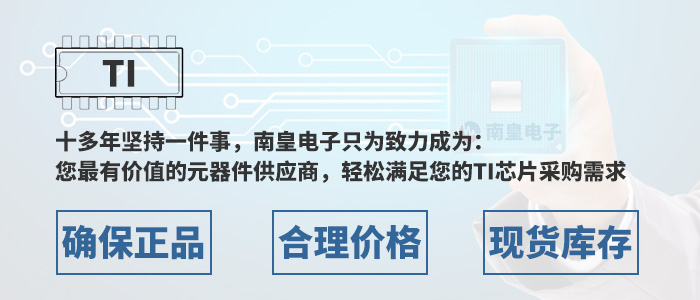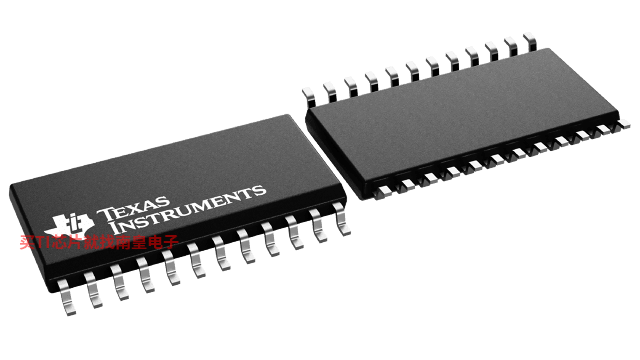
- 制造厂商:TI
- 产品类别:接口
- 技术类目:其他接口
- 功能描述:增强型产品嵌入式测试总线控制器 Ieee Std 1149.1 (Jtag) Tap 主控制器
- 点击这里打开及下载SN74LVT8980A-EP的技术文档资料
- TI代理渠道,提供当日发货、严格的质量标准,满足您的目标价格

The SN74LVT8980A embedded test-bus controllers (eTBCs) are members of the TI broad family of testability integrated circuits. This family of devices supports IEEE Std 1149.1-1990 boundary scan to facilitate testing of complex circuit assemblies. Unlike most other devices of this family, the eTBCs are not boundary-scannable devices; rather, their function is to master an IEEE Std 1149.1 (JTAG) test access port (TAP) under the command of an embedded host microprocessor/microcontroller. Thus, the eTBCs enable the practical and effective use of the IEEE Std 1149.1 test-access infrastructure to support embedded/built-in test, emulation, and configuration/maintenance facilities at board and system levels.
The eTBCs master all TAP signals required to support one 4- or 5-wire IEEE Std 1149.1 serial test bus: test clock (TCK), test mode select (TMS), test data input (TDI), test data output (TDO), and test reset (TRST)\. All such signals can be connected directly to the associated target IEEE Std 1149.1 devices without need for additional logic or buffering. However, as well as being directly connected, the TMS, TDI, and TDO signals can be connected to distant target IEEE Std 1149.1 devices via a pipeline, with a retiming delay of up to 15 TCK cycles; the eTBCs automatically handle all associated serial-data justification.
Conceptually, the eTBCs operate as simple 8-bit memory- or I/O-mapped peripherals to a microprocessor/microcontroller (host). High-level commands and parallel data are passed to/from the eTBCs via their generic host interface, which includes an 8-bit data bus (D7-D0) and a 3-bit address bus (A2-A0). Read/write select (R/W\) and strobe (STRB)\ signals are implemented so that the critical host-interface timing is independent of the CLKIN period. An asynchronous ready (RDY) indicator is provided to hold off, or insert wait states into, a host read/write cycle when the eTBCs cannot respond immediately to the requested read/write operation.
High-level commands are issued by the host to cause the eTBCs to generate the TMS sequences necessary to move the test bus from any stable TAP-controller state to any other such stable state, to scan instruction or data through test registers in target devices, and/or to execute instructions in the Run-Test/Idle TAP state. A 32-bit counter can be programmed to allow a predetermined number of scan or execute cycles.
During scan operations, serial data that appears at the TDI input is transferred into a serial to 4 × 8-bit-parallel first-in/first-out (FIFO) read buffer, which can then be read by the host to obtain the return serial-data stream up to eight bits at a time. Serial data that is to be transmitted from the TDO output is written by the host, up to eight bits at a time, to a 4 × 8-bit-parallel to serial FIFO write buffer.
In addition to such simple state-movement, scan, and run-test operations, the eTBCs support several additional commands that provide for input-only scans, output-only scans, recirculate scans (in which TDI is mirrored back to TDO), and a scan mode that generates the protocols used to support multidrop TAP configurations using TI’s addressable scan port. Two loopback modes also are supported that allow the microprocessor/microcontroller host to monitor the TDO or TMS data streams output by the eTBCs.
The eTBCs’ flexible clocking architecture allows the user to choose between free-running (in which the TCK always follows CLKIN) and gated modes (in which the TCK output is held static except during state-move, run-test, or scan cycles) as well as to divide down TCK from CLKIN. A discrete mode also is available in which the TAP is driven strictly by read/write cycles under full control of the microprocessor/microcontroller host. These features ensure that virtually any IEEE Std 1149.1 target device or device chain can be serviced by the eTBCs, even where such may not fully comply to IEEE Std 1149.1.
While most operations of the eTBCs are synchronous to CLKIN, a test-output enable (TOE)\ is provided for output control of the TAP outputs, and a reset (RST)\ input is provided for hardware reset of the eTBCs. The former can be used to disable the eTBCs so that an external controller can master the associated IEEE Std 1149.1 test bus.
- Controlled Baseline
- One Assembly/Test Site, One Fabrication Site
- Enhanced Diminishing Manufacturing Sources (DMS) Support
- Enhanced Product-Change Notification
- Qualification Pedigree
- Members of Texas Instruments Broad Family of Testability Products Supporting IEEE Std 1149.1-1990 (JTAG) Test Access Port (TAP) and Boundary-Scan Architecture
- Provide Built-In Access to IEEE Std 1149.1 Scan-Accessible Test/Maintenance Facilities at Board and System Levels
- While Powered at 3.3 V, the TAP Interface Is Fully 5-V Tolerant for Mastering Both 5-V and/or 3.3-V IEEE Std 1149.1 Targets
- Simple Interface to Low-Cost 3.3-V Microprocessors/Microcontrollers Via 8-Bit Asynchronous Read/Write Data Bus
- Easy Programming Via Scan-Level Command Set and Smart TAP Control
- Transparently Generate Protocols to Support Multidrop TAP Configurations Using TI’s Addressable Scan Port
- Flexible TCK Generator Provides Programmable Division, Gated-TCK, and Free-Running-TCK Modes
- Discrete TAP Control Mode Supports Arbitrary TMS/TDI Sequences for Noncompliant Targets
- Programmable 32-Bit Test Cycle Counter Allows Virtually Unlimited Scan/Test Length
- Accommodate Target Retiming (Pipeline) Delays of up to 15 TCK Cycles
- Test Output Enable (TOE)\ Allows for External Control of TAP Signals
- High-Drive Outputs (–32-mA IOH, 64-mA IOL) at TAP Support Backplane Interface and/or High Fanout
Component qualification in accordance with JEDEC and industry standards to ensure reliable operation over an extended temperature range. This includes, but is not limited to, Highly Accelerated Stress Test (HAST) or biased 85/85, temperature cycle, autoclave or unbiased HAST, electromigration, bond intermetallic life, and mold compound life. Such qualification testing should not be viewed as justifying use of this component beyond specified performance and environmental limits.
- Operating temperature range (C)
- -40 to 85
SN74LVT8980A-EP的完整型号有:SN74LVT8980AIDWREP、V62/03668-01XE,以下是这些产品的关键参数及官网采购报价:
SN74LVT8980AIDWREP,工作温度:-40 to 85,封装:SOIC (DW)-24,包装数量MPQ:2000个,MSL 等级/回流焊峰值温度:Level-1-260C-UNLIM,引脚镀层/焊球材料:NIPDAU,TI官网SN74LVT8980AIDWREP的批量USD价格:11.723(1000+)
V62/03668-01XE,工作温度:-40 to 85,封装:SOIC (DW)-24,包装数量MPQ:2000个,MSL 等级/回流焊峰值温度:Level-1-260C-UNLIM,引脚镀层/焊球材料:NIPDAU,TI官网V62/03668-01XE的批量USD价格:11.723(1000+)

PSPICE-FOR-TI — 适用于 TI 设计和模拟工具的 PSpice
PSpice for TI 可提供帮助评估模拟电路功能的设计和仿真环境。此功能齐全的设计和仿真套件使用 Cadence 的模拟分析引擎。PSpice for TI 可免费使用,包括业内超大的模型库之一,涵盖我们的模拟和电源产品系列以及精选的模拟行为模型。借助?PSpice for TI 的设计和仿真环境及其内置的模型库,您可对复杂的混合信号设计进行仿真。创建完整的终端设备设计和原型解决方案,然后再进行布局和制造,可缩短产品上市时间并降低开发成本。
在?PSpice for TI 设计和仿真工具中,您可以搜索 TI (...)
TINA-TI — 基于 SPICE 的模拟仿真程序
TINA-TI 提供了 SPICE 所有的传统直流、瞬态和频域分析以及更多。TINA 具有广泛的后处理功能,允许您按照希望的方式设置结果的格式。虚拟仪器允许您选择输入波形、探针电路节点电压和波形。TINA 的原理图捕获非常直观 - 真正的“快速入门”。TINA-TI 安装需要大约 500MB。直接安装,如果想卸载也很容易。我们相信您肯定会爱不释手。
TINA 是德州仪器 (TI) 专有的 DesignSoft 产品。该免费版本具有完整的功能,但不支持完整版 TINA 所提供的某些其他功能。
如需获取可用 TINA-TI 模型的完整列表,请参阅:SpiceRack - 完整列表
需要 HSpice (...)



